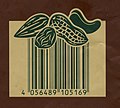Barcode

Abarcodeorbar codeis a method of representing data in a visual,machine-readable form.Initially, barcodes represented data by varying the widths, spacings and sizes of parallel lines. These barcodes, now commonly referred to as linear or one-dimensional (1D), can be scanned by specialoptical scanners,calledbarcode readers,of which there are several types.
Later, two-dimensional (2D) variants were developed, using rectangles, dots,hexagonsand other patterns, called2D barcodesormatrix codes,although they do not use bars as such. Both can be read using purpose-built 2D optical scanners, which exist in a few different forms. Matrix codes can also be read by a digital camera connected to a microcomputer running software that takes a photographic image of the barcode and analyzes the image to deconstruct and decode the code. Amobile devicewith a built-in camera, such as asmartphone,can function as the latter type of barcode reader using specializedapplication softwareand is suitable for both 1D and 2D codes.

The barcode was invented byNorman Joseph WoodlandandBernard Silverand patented in the US in 1952.[1]The invention was based onMorse code[2]that was extended to thin and thick bars. However, it took over twenty years before this invention became commercially successful. UK magazineModern RailwaysDecember 1962 pages 387–389 record howBritish Railwayshad already perfected a barcode-reading system capable of correctly reading rolling stock travelling at 100 mph (160 km/h) with no mistakes. An early use of one type of barcode in an industrial context was sponsored by theAssociation of American Railroadsin the late 1960s. Developed byGeneral Telephone and Electronics(GTE) and calledKarTrak ACI(Automatic Car Identification), this scheme involved placing colored stripes in various combinations on steel plates which were affixed to the sides of railroad rolling stock. Two plates were used per car, one on each side, with the arrangement of the colored stripes encoding information such as ownership, type of equipment, and identification number.[3]The plates were read by a trackside scanner located, for instance, at the entrance to a classification yard, while the car was moving past.[4]The project was abandoned after about ten years because the system proved unreliable after long-term use.[3]
Barcodes became commercially successful when they were used to automate supermarketcheckoutsystems, a task for which they have become almost universal. The Uniform Grocery Product Code Council had chosen, in 1973, the barcode design developed byGeorge Laurer.Laurer's barcode, with vertical bars, printed better than the circular barcode developed by Woodland and Silver.[5]Their use has spread to many other tasks that are generically referred to asautomatic identification and data capture(AIDC). The first successful system using barcodes was in the UK supermarket groupSainsbury'sin 1972 using shelf-mounted barcodes which were developed byPlessey.[6][7]In June 1974,Marsh supermarketinTroy, Ohioused a scanner made byPhotographic Sciences Corporationto scan theUniversal Product Code(UPC) barcode on a pack ofWrigley'schewing gum.[8][5]QR codes,a specific type of 2D barcode, have recently[when?]become very popular due to the growth in smartphone ownership.[9]
Other systems have made inroads in theAIDCmarket, but the simplicity, universality and low cost of barcodes has limited the role of these other systems, particularly before technologies such asradio-frequency identification(RFID) became available after 2023.
History
[edit]This articleduplicatesthe scope of other articles,specificallyUniversal Product Code#History.(December 2013) |
In 1948,Bernard Silver,a graduate student atDrexel Institute of TechnologyinPhiladelphia,Pennsylvania,US overheard the president of the local food chain,Food Fair,asking one of the deans to research a system to automatically read product information during checkout.[10]Silver told his friendNorman Joseph Woodlandabout the request, and they started working on a variety of systems. Their first working system usedultravioletink, but the ink faded too easily and was expensive.[11]
Convinced that the system was workable with further development, Woodland left Drexel, moved into his father's apartment in Florida, and continued working on the system. His next inspiration came fromMorse code,and he formed his first barcode from sand on the beach. "I just extended the dots and dashes downwards and made narrow lines and wide lines out of them."[11]To read them, he adapted technology from optical soundtracks in movies, using a 500-watt incandescent light bulb shining through the paper onto anRCA935photomultipliertube (from a movie projector) on the far side. He later decided that the system would work better if it were printed as a circle instead of a line, allowing it to be scanned in any direction.
On 20 October 1949, Woodland and Silver filed a patent application for "Classifying Apparatus and Method", in which they described both the linear andbull's eyeprinting patterns, as well as the mechanical and electronic systems needed to read the code. The patent was issued on 7 October 1952 as US Patent 2,612,994.[1]In 1951, Woodland moved toIBMand continually tried to interest IBM in developing the system. The company eventually commissioned a report on the idea, which concluded that it was both feasible and interesting, but that processing the resulting information would require equipment that was some time off in the future.
IBM offered to buy the patent, but the offer was not accepted.Philcopurchased the patent in 1962 and then sold it toRCAsometime later.[11]
Collins at Sylvania
[edit]During his time as an undergraduate,David Jarrett Collinsworked at thePennsylvania Railroadand became aware of the need to automatically identify railroad cars. Immediately after receiving his master's degree fromMITin 1959, he started work atGTE Sylvaniaand began addressing the problem. He developed a system calledKarTrakusing blue, white and red reflective stripes attached to the side of the cars, encoding a four-digit company identifier and a six-digit car number.[11]Light reflected off the colored stripes was read byphotomultipliervacuum tubes.[12]
TheBoston and Maine Railroadtested the KarTrak system on their gravel cars in 1961. The tests continued until 1967, when theAssociation of American Railroads(AAR) selected it as a standard,Automatic Car Identification,across the entire North American fleet. The installations began on 10 October 1967. However, theeconomic downturnand rash of bankruptcies in the industry in the early 1970s greatly slowed the rollout, and it was not until 1974 that 95% of the fleet was labeled. To add to its woes, the system was found to be easily fooled by dirt in certain applications, which greatly affected accuracy. The AAR abandoned the system in the late 1970s, and it was not until the mid-1980s that they introduced a similar system, this time based on radio tags.[13]
The railway project had failed, but atoll bridgeinNew Jerseyrequested a similar system so that it could quickly scan for cars that had purchased a monthly pass. Then theU.S. Post Officerequested a system to track trucks entering and leaving their facilities. These applications required specialretroreflectorlabels. Finally,Kal Kanasked the Sylvania team for a simpler (and cheaper) version which they could put on cases of pet food for inventory control.
Computer Identics Corporation
[edit]In 1967, with therailwaysystem maturing, Collins went to management looking for funding for a project to develop a black-and-white version of the code for other industries. They declined, saying that the railway project was large enough, and they saw no need to branch out so quickly.
Collins then quit Sylvania and formed theComputer Identics Corporation.[11]As its first innovations, Computer Identics moved from using incandescent light bulbs in its systems, replacing them withhelium–neon lasers,and incorporated a mirror as well, making it capable of locating a barcode up to a meter (3 feet) in front of the scanner. This made the entire process much simpler and more reliable, and typically enabled these devices to deal with damaged labels, as well, by recognizing and reading the intact portions.
Computer Identics Corporation installed one of its first two scanning systems in the spring of 1969 at aGeneral Motors(Buick) factory in Flint, Michigan.[11]The system was used to identify a dozen types of transmissions moving on an overhead conveyor from production to shipping. The other scanning system was installed at General Trading Company's distribution center in Carlstadt, New Jersey to direct shipments to the proper loading bay.
Universal Product Code
[edit]In 1966, theNational Association of Food Chains(NAFC) held a meeting on the idea of automated checkout systems.RCA,who had purchased the rights to the original Woodland patent, attended the meeting and initiated an internal project to develop a system based on the bullseye code. TheKrogergrocery chain volunteered to test it.
In the mid-1970s, the NAFC established the Ad-Hoc Committee for U.S. Supermarkets on a Uniform Grocery-Product Code to set guidelines for barcode development. In addition, it created a symbol-selection subcommittee to help standardize the approach. In cooperation with consulting firm,McKinsey & Co.,they developed a standardized 11-digit code for identifying products. The committee then sent out a contract tender to develop abarcode systemto print and read the code. The request went toSinger,National Cash Register(NCR),Litton Industries,RCA,Pitney-Bowes,IBM and many others.[14]A wide variety of barcode approaches was studied, including linear codes, RCA's bullseye concentric circle code,starburstpatterns and others.
In the spring of 1971, RCA demonstrated their bullseye code at another industry meeting. IBM executives at the meeting noticed the crowds at the RCA booth and immediately developed their own system. IBM marketing specialist Alec Jablonover remembered that the company still employed Woodland, and he established a new facility in Raleigh-DurhamResearch Triangle Parkto lead development.
In July 1972, RCA began an 18-month test in a Kroger store in Cincinnati. Barcodes were printed on small pieces of adhesive paper, and attached by hand by store employees when they were adding price tags. The code proved to have a serious problem; the printers would sometimes smear ink, rendering the code unreadable in most orientations. However, a linear code, like the one being developed by Woodland at IBM, was printed in the direction of the stripes, so extra ink would simply make the code "taller" while remaining readable. So on 3 April 1973, the IBM UPC was selected as the NAFC standard. IBM had designed five versions of UPC symbology for future industry requirements: UPC A, B, C, D, and E.[15]
NCR installed a testbed system atMarsh's SupermarketinTroy, Ohio,near the factory that was producing the equipment. On 26 June 1974, Clyde Dawson pulled a 10-pack of Wrigley'sJuicy Fruitgum out of his basket and it was scanned by Sharon Buchanan at 8:01 am. The pack of gum and the receipt are now on display in theSmithsonian Institution.It was the first commercial appearance of the UPC.[16]
In 1971, an IBM team was assembled for an intensive planning session, threshing out, 12 to 18 hours a day, how the technology would be deployed and operate cohesively across the system, and scheduling a roll-out plan. By 1973, the team were meeting with grocery manufacturers to introduce the symbol that would need to be printed on the packaging or labels of all of their products. There were no cost savings for a grocery to use it, unless at least 70% of the grocery's products had the barcode printed on the product by the manufacturer. IBM projected that 75% would be needed in 1975.
Economic studies conducted for the grocery industry committee projected over $40 million in savings to the industry from scanning by the mid-1970s. Those numbers were not achieved in that time-frame and some predicted the demise of barcode scanning. The usefulness of the barcode required the adoption of expensive scanners by a critical mass of retailers while manufacturers simultaneously adopted barcode labels. Neither wanted to move first and results were not promising for the first couple of years, withBusiness Weekproclaiming "The Supermarket Scanner That Failed" in a 1976 article.[16][17]
Sims Supermarketswere the first location in Australia to use barcodes, starting in 1979.[18]
Barcode system
[edit]A barcode system is a network of hardware andsoftware,consisting primarily ofmobile computers,printers,handheld scanners,infrastructure, and supporting software. Barcode systems are used to automate data collection where hand recording is neither timely nor cost effective. Despite often being provided by the same company, Barcoding systems are notradio-frequency identification(RFID) systems. Many companies use both technologies as part of largerresource managementsystems.
A typical barcode system consist of some infrastructure, either wired or wireless that connects some number of mobile computers, handheld scanners, and printers to one or many databases that store and analyze the data collected by the system. At some level there must be some software to manage the system. The software may be as simple as code that manages the connection between the hardware and the database or as complex as anERP,MRP,or some otherinventory managementsoftware.
Hardware
[edit]This sectioncontains content that is written likean advertisement.(August 2024) |
There is a wide range of hardware that is manufactured today for use in Barcode Systems. The best known brand of handheld scanners and mobile computers isSymbol,which is now a division ofMotorola.Other manufacturers include Datalogic, Intermec, HHP (Hand Held Products),Microscan Systems,Unitech, Metrologic, PSC and PANMOBIL.
Software
[edit]This sectioncontains content that is written likean advertisement.(August 2024) |
While there is a range of hardware on the market, software is more difficult to find from the hardware manufacturers. Some ERP, MRP, and otherinventory management softwarehave built in support for barcode reading and some even allow the software to run directly on a mobile computer. Besides full management software, there are more than a few software development kits on the market that allow the developer to easily produce custom mobile interfaces and that handle the connect to the database. One such software isRFgenanother isPeopleVox.Then there is always the option of developing a custom software solution, using a language such asC++,C#,Java,Visual Basic.NET,and many others. Often developing a custom interface using software such as RFgen or developing new, personalized software is the most effective method since it allows the individual to have a solution that is fitted to their exact needs.
Industrial adoption
[edit]In 1981, theUnited States Department of Defenseadopted the use ofCode 39for marking all products sold to the United States military. This system, Logistics Applications of Automated Marking and Reading Symbols (LOGMARS), is still used by DoD and is widely viewed as the catalyst for widespread adoption of barcoding in industrial uses.[19]
Use
[edit]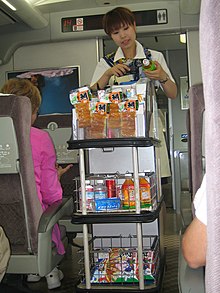
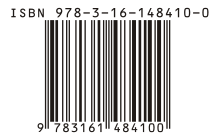


Barcodes are widely used around the world in many contexts. In stores, UPC barcodes are pre-printed on most items other than fresh produce from agrocery store.This speeds up processing at check-outs and helps track items and also reduces instances ofshopliftinginvolving price tag swapping, although shoplifters can now print their own barcodes.[20]Barcodes that encode a book'sISBNare also widely pre-printed on books, journals and other printed materials. In addition, retail chain membership cards use barcodes to identify customers, allowing for customized marketing and greater understanding of individual consumer shopping patterns. At the point of sale, shoppers can get product discounts or special marketing offers through the address or e-mail address provided at registration.
Barcodes are widelyused in the healthcare and hospital settings,ranging from patient identification (to access patient data, including medical history, drug allergies, etc.) to creatingSOAP Notes[21]with barcodes to medication management. They are also used to facilitate the separation and indexing of documents that have been imaged in batch scanning applications, track the organization ofspeciesin biology,[22]and integrate with in-motioncheckweighersto identify the item being weighed in aconveyorline fordata collection.
They can also be used to keep track of objects and people; they are used to keep track ofrental cars,airline luggage,nuclear waste,registered mail,express mailand parcels. Barcoded tickets (which may be printed by the customer on their home printer, or stored on their mobile device) allow the holder to enter sports arenas, cinemas, theatres, fairgrounds, and transportation, and are used to record the arrival and departure of vehicles from rental facilities etc. This can allow proprietors to identify duplicate or fraudulent tickets more easily. Barcodes are widely used in shop floor control applications software where employees can scan work orders and track the time spent on a job.
Barcodes are also used in some kinds of non-contact 1D and 2Dposition sensors.A series of barcodes are used in some kinds of absolute 1Dlinear encoder.The barcodes are packed close enough together that the reader always has one or two barcodes in its field of view. As a kind offiducial marker,the relative position of the barcode in the field of view of the reader gives incremental precise positioning, in some cases withsub-pixel resolution.The data decoded from the barcode gives the absolute coarse position. An "address carpet", used indigital paper,such as Howell's binary pattern and theAnotodot pattern, is a 2D barcode designed so that a reader, even though only a tiny portion of the complete carpet is in the field of view of the reader, can find its absolute X, Y position and rotation in the carpet.[23][24]
Matrix codes can embed ahyperlinkto a web page. A mobile device with a built-in camera might be used to read the pattern and browse the linked website, which can help a shopper find the best price for an item in the vicinity. Since 2005, airlines use an IATA-standard 2D barcode on boarding passes (Bar Coded Boarding Pass (BCBP)), and since 2008 2D barcodes sent to mobile phones enable electronic boarding passes.[25]
Some applications for barcodes have fallen out of use. In the 1970s and 1980s, software source code was occasionally encoded in a barcode and printed on paper (Cauzin Softstripand Paperbyte[26]are barcode symbologies specifically designed for this application), and the 1991Barcode Battlercomputer game system used any standard barcode to generate combat statistics.
Artists have used barcodes in art, such asScott Blake'sBarcode Jesus, as part of thepost-modernismmovement.
Symbologies
[edit]The mapping between messages and barcodes is called asymbology.The specification of a symbology includes the encoding of the message into bars and spaces, any required start and stop markers, the size of the quiet zone required to be before and after the barcode, and the computation of achecksum.
Linear symbologies can be classified mainly by two properties:
- Continuous vs. discrete
- Characters in discrete symbologies are composed ofnbars andn− 1 spaces. There is an additional space between characters, but it does not convey information, and may have any width as long as it is not confused with the end of the code.
- Characters in continuous symbologies are composed ofnbars andnspaces, and usually abut, with one character ending with a space and the next beginning with a bar, or vice versa. A special end pattern that has bars on both ends is required to end the code.
- Two-width vs. many-width
- A two-width, also called abinary bar code,contains bars and spaces of two widths, "wide" and "narrow". The precise width of the wide bars and spaces is not critical; typically, it is permitted to be anywhere between 2 and 3 times the width of the narrow equivalents.
- Some other symbologies use bars of two different heights (POSTNET), or the presence or absence of bars (CPC Binary Barcode). These are normally also considered binary bar codes.
- Bars and spaces in many-width symbologies are all multiples of a basic width called themodule;most such codes use four widths of 1, 2, 3 and 4 modules.
Some symbologies use interleaving. The first character is encoded using black bars of varying width. The second character is then encoded by varying the width of the white spaces between these bars. Thus, characters are encoded in pairs over the same section of the barcode.Interleaved 2 of 5is an example of this.
Stacked symbologies repeat a given linear symbology vertically.
The most common among the many 2D symbologies are matrix codes, which feature square or dot-shaped modules arranged on a grid pattern. 2D symbologies also come in circular and other patterns and may employsteganography,hiding modules within an image (for example,DataGlyphs).
Linear symbologies are optimized for laser scanners, which sweep a light beam across the barcode in a straight line, reading asliceof the barcode light-dark patterns. Scanning at an angle makes the modules appear wider, but does not change the width ratios. Stacked symbologies are also optimized for laser scanning, with the laser making multiple passes across the barcode.
In the 1990s development ofcharge-coupled device(CCD) imagers to read barcodes was pioneered byWelch Allyn.Imaging does not require moving parts, as a laser scanner does. In 2007, linear imaging had begun to supplant laser scanning as the preferred scan engine for its performance and durability.
2D symbologies cannot be read by a laser, as there is typically no sweep pattern that can encompass the entire symbol. They must be scanned by an image-based scanner employing a CCD or other digital camera sensor technology.
Barcode readers
[edit]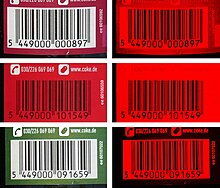
The earliest, and still[when?]the cheapest, barcode scanners are built from a fixed light and a singlephotosensorthat is manually moved across the barcode. Barcode scanners can be classified into three categories based on their connection to the computer. The older type is theRS-232barcode scanner. This type requires special programming for transferring the input data to the application program. Keyboard interface scanners connect to a computer using aPS/2orAT keyboard–compatible adaptor cable (a "keyboard wedge"). The barcode's data is sent to the computer as if it had been typed on the keyboard.
Like the keyboard interface scanner,USBscanners do not need custom code for transferring input data to the application program. On PCs running Windows thehuman interface deviceemulates the data merging action of a hardware "keyboard wedge", and the scanner automatically behaves like an additional keyboard.
Most modern smartphones are able to decode barcode using their built-in camera. Google's mobileAndroidoperating system can use their ownGoogle Lensapplication to scan QR codes, or third-party apps likeBarcode Scannerto read both one-dimensional barcodes and QR codes. Google'sPixeldevices can natively read QR codes inside the defaultPixel Cameraapp. Nokia'sSymbianoperating system featured a barcode scanner,[27]while mbarcode[28]is a QR code reader for theMaemooperating system. In AppleiOS 11,the native camera app can decode QR codes and can link to URLs, join wireless networks, or perform other operations depending on the QR Code contents.[29]Other paid and free apps are available with scanning capabilities for other symbologies or for earlier iOS versions.[30]WithBlackBerrydevices, the App World application can natively scan barcodes and load any recognized Web URLs on the device's Web browser.Windows Phone 7.5is able to scan barcodes through theBingsearch app. However, these devices are not designed specifically for the capturing of barcodes. As a result, they do not decode nearly as quickly or accurately as a dedicated barcode scanner orportable data terminal.[citation needed]
Quality control and verification
[edit]It is common for producers and users of bar codes to have aquality management systemwhich includesverification and validationof bar codes.[31]Barcode verification examines scanability and the quality of the barcode in comparison to industry standards and specifications.[32]Barcode verifiers are primarily used by businesses that print and use barcodes. Any trading partner in thesupply chaincan test barcode quality. It is important to verify a barcode to ensure that any reader in the supply chain can successfully interpret a barcode with a low error rate. Retailers levy large penalties for non-compliant barcodes. These chargebacks can reduce a manufacturer's revenue by 2% to 10%.[33]
A barcode verifier works the way a reader does, but instead of simply decoding a barcode, a verifier performs a series of tests. For linear barcodes these tests are:
- Edge contrast (EC)[34]
- The difference between the space reflectance (Rs) and adjoining bar reflectance (Rb). EC=Rs-Rb
- Minimum bar reflectance (Rb)[34]
- The smallest reflectance value in a bar.
- Minimum space reflectance (Rs)[34]
- The smallest reflectance value in a space.
- Symbol contrast (SC)[34]
- Symbol contrast is the difference in reflectance values of the lightest space (including the quiet zone) and the darkest bar of the symbol. The greater the difference, the higher the grade. The parameter is graded as either A, B, C, D, or F. SC=Rmax-Rmin
- Minimum edge contrast (ECmin)[34]
- The difference between the space reflectance (Rs) and adjoining bar reflectance (Rb). EC=Rs-Rb
- Modulation (MOD)[34]
- The parameter is graded either A, B, C, D, or F. This grade is based on the relationship between minimum edge contrast (ECmin) and symbol contrast (SC). MOD=ECmin/SC The greater the difference between minimum edge contrast and symbol contrast, the lower the grade. Scanners and verifiers perceive the narrower bars and spaces to have less intensity than wider bars and spaces; the comparison of the lesser intensity of narrow elements to the wide elements is called modulation. This condition is affected by aperture size.
- Inter-character gap[34]
- In discrete barcodes, the space that disconnects the two contiguous characters. When present, inter-character gaps are considered spaces (elements) for purposes of edge determination and reflectance parameter grades.
- Defects
- Decode[34]
- Extracting the information which has been encoded in a bar code symbol.
- Decodability[34]
- Can be graded as A, B, C, D, or F. The Decodability grade indicates the amount of error in the width of the most deviant element in the symbol. The less deviation in the symbology, the higher the grade. Decodability is a measure of print accuracy using the symbology reference decode algorithm.
2D matrix symbols look at the parameters:
- Symbol contrast[34]
- Modulation[34]
- Decode[34]
- Unused error correction
- Fixed (finder) pattern damage
- Grid non-uniformity
- Axial non-uniformity[35]
Depending on the parameter, eachANSItest is graded from 0.0 to 4.0 (F to A), or given a pass or fail mark. Each grade is determined by analyzing thescan reflectance profile(SRP), an analog graph of a single scan line across the entire symbol. The lowest of the 8 grades is the scan grade, and the overall ISO symbol grade is the average of the individual scan grades. For most applications a 2.5 (C) is the minimal acceptable symbol grade.[36]
Compared with a reader, a verifier measures a barcode's optical characteristics to international and industry standards. The measurement must be repeatable and consistent. Doing so requires constant conditions such as distance, illumination angle, sensor angle and verifieraperture.Based on the verification results, the production process can be adjusted to print higher quality barcodes that will scan down the supply chain.
Bar code validation may include evaluations after use (and abuse) testing such as sunlight, abrasion, impact, moisture, etc.[37]
Barcode verifier standards
[edit]Barcode verifier standards are defined by theInternational Organization for Standardization(ISO), in ISO/IEC 15426-1 (linear) or ISO/IEC 15426-2 (2D).[citation needed]The current international barcode quality specification is ISO/IEC 15416 (linear) and ISO/IEC 15415 (2D).[citation needed]TheEuropean StandardEN 1635 has been withdrawn and replaced by ISO/IEC 15416. The original U.S. barcode quality specification wasANSIX3.182. (UPCs used in the US – ANSI/UCC5).[citation needed]As of 2011 the ISO workgroup JTC1 SC31 was developing aDirect Part Marking (DPM)quality standard: ISO/IEC TR 29158.[38]
Benefits
[edit]In point-of-sale management, barcode systems can provide detailed up-to-date information on the business, accelerating decisions and with more confidence. For example:
- Fast-selling items can be identified quickly and automatically reordered.
- Slow-selling items can be identified, preventing inventory build-up.
- The effects of merchandising changes can be monitored, allowing fast-moving, more profitable items to occupy the best space.
- Historical data can be used to predict seasonal fluctuations very accurately.
- Items may be repriced on the shelf to reflect both sale prices and price increases.
- This technology also enables the profiling of individual consumers, typically through a voluntary registration of discount cards. While pitched as a benefit to the consumer, this practice is considered to be potentially dangerous by privacy advocates.[which?]
Besides sales and inventory tracking, barcodes are very useful in logistics and supply chain management.
- When a manufacturer packs a box for shipment, a unique identifying number (UID) can be assigned to the box.
- A database can link the UID to relevant information about the box; such as order number, items packed, quantity packed, destination, etc.
- The information can be transmitted through a communication system such aselectronic data interchange(EDI) so the retailer has the information about a shipment before it arrives.
- Shipments that are sent to a distribution center (DC) are tracked before forwarding. When the shipment reaches its final destination, the UID gets scanned, so the store knows the shipment's source, contents, and cost.
Barcode scanners are relatively low cost and extremely accurate compared to key-entry, with only about 1 substitution error in 15,000 to 36 trillion characters entered.[39][unreliable source?]The exact error rate depends on the type of barcode.
Types of barcodes
[edit]Linear barcodes
[edit]A first generation, "one dimensional" barcode that is made up of lines and spaces of various widths or sizes that create specific patterns.
| Example | Symbology | Continuous or discrete | Bar type | Uses |
|---|---|---|---|---|
| Codabar | Discrete | Two | Old format used in libraries and blood banks and on airbills (out of date, but still widely used in libraries) | |
| Code 25 – Non-interleaved 2 of 5 | Continuous | Two | Industrial | |
| Code 25 – Interleaved 2 of 5 | Continuous | Two | Wholesale, libraries International standard ISO/IEC 16390 | |
 |
Code 11 | Discrete | Two | Telephones (out of date) |
 |
Farmacodeor Code 32 | Discrete | Two | Italian pharmacode – useCode 39(no international standard available) |
 |
Code 39 | Discrete | Two | Various – international standard ISO/IEC 16388 |
 |
Code 93 | Continuous | Many | Various |
 |
Code 128 | Continuous | Many | Various – International Standard ISO/IEC 15417 |
| CPC Binary | Discrete | Two | ||
 |
Data Logic 2 of 5 | Discrete | Two | Datalogic 2 of 5 can encode digits 0-9 and was used mostly in Chinese Postal Services. |
 |
EAN 2 | Continuous | Many | Addon code (magazines),GS1-approved – not an own symbology – to be used only with an EAN/UPC according to ISO/IEC 15420 |
 |
EAN 5 | Continuous | Many | Addon code (books),GS1-approved – not an own symbology – to be used only with an EAN/UPC according to ISO/IEC 15420 |
 |
EAN-8,EAN-13 | Continuous | Many | Worldwide retail,GS1-approved – International Standard ISO/IEC 15420 |
| || | || | Facing Identification Mark | Discrete | Two | USPS business reply mail |
| GS1-128(formerly named UCC/EAN-128), incorrectly referenced asEAN 128andUCC 128 | Continuous | Many | Various,GS1-approved – just an application of the Code 128 (ISO/IEC 15417) using the ANS MH10.8.2 AI Datastructures. It is not a separate symbology. | |
 |
GS1 DataBar,formerly Reduced Space Symbology (RSS) | Continuous | Many | Various,GS1-approved |
 |
IATA 2 of 5 | Discrete | Two | IATA 2 of 5 version ofIndustrial 2 of 5is used by International Air Transport Association had fixed 17 digits length with 16 valuable package identification digit and 17-th check digit. |
| Industrial 2 of 5 | Discrete | Two | Industrial 2 of 5 can encode only digits 0-9 and at this time has only historical value. | |
| ITF-14 | Continuous | Two | Non-retail packaging levels,GS1-approved – is just an Interleaved 2/5 Code (ISO/IEC 16390) with a few additional specifications, according to the GS1 General Specifications | |
 |
ITF-6 | Continuous | Two | Interleaved 2 of 5barcode to encode an addon toITF-14and ITF-16 barcodes. The code is used to encode additional data such as items quantity or container weight |
 |
JAN | Continuous | Many | Used in Japan, similar to and compatible withEAN-13(ISO/IEC 15420) |
| Japan Postbarcode | Discrete | 4 bar heights | Japan Post | |
 |
Matrix 2 of 5 | Discrete | Two | Matrix 2 of 5 can encode digits 0-9 and was uses for warehouse sorting, photo finishing, and airline ticket marking. |
 |
MSI | Continuous | Two | Used for warehouse shelves and inventory |
 |
Pharmacode | Discrete | Two | Pharmaceutical packaging (no international standard available) |
| PLANET | Continuous | Tall/short | United States Postal Service (no international standard available) | |
| Plessey | Continuous | Two | Catalogs, store shelves, inventory (no international standard available) | |
| Telepen | Continuous | Two | Libraries (UK) | |
 |
Universal Product Code(UPC-A and UPC-E) | Continuous | Many | Worldwide retail,GS1-approved – International Standard ISO/IEC 15420 |
2D barcodes
[edit]2D barcodes consist of bars, but use both dimensions for encoding.
| Example | Symbology | Continuous or discrete | Bar type | Uses |
|---|---|---|---|---|
| Australia Postbarcode | Discrete | 4 bar heights | An Australia Post 4-state barcode as used on a business reply paid envelope and applied by automated sorting machines to other mail when initially processed in fluorescent ink.[40] | |
 |
Codablock | Continuous | Many | Codablock is a family of stacked 1D barcodes (in some cases counted as stacked 2D barcodes) which are used in health care industry (HIBC). |
 |
Code 49 | Continuous | Many | Various |
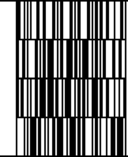
|
Code 16K | The Code 16K (1988) is a multi-row bar code developed by Ted Williams at Laserlight Systems (USA) in 1992. In the US and France, the code is used in the electronics industry to identify chips and printed circuit boards. Medical applications in the USA are well known. Williams also developed Code 128, and the structure of 16K is based on Code 128. Not coincidentally, 128 squared happened to equal 16,384 or 16K for short. Code 16K resolved an inherent problem with Code 49. Code 49's structure requires a large amount of memory for encoding and decoding tables and algorithms. 16K is a stacked symbology.[41][42] | ||
 |
DX film edge barcode | Neither | Tall/short | Color print film |
| Intelligent Mail barcode | Discrete | 4 bar heights | United States Postal Service, replaces both POSTNET and PLANET symbols (formerly namedOneCode) | |
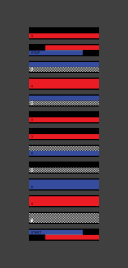 |
KarTrakACI | Discrete | Coloured bars | Used in North America on railroad rolling equipment |
| PostBar | Discrete | 4 bar heights | Canadian Post office | |
| POSTNET | Discrete | Tall/short | United States Postal Service (no international standard available) | |
 |
RM4SCC/ KIX | Discrete | 4 bar heights | Royal Mail /PostNL |
| RM Mailmark C | Discrete | 4 bar heights | Royal Mail | |
| RM Mailmark L | Discrete | 4 bar heights | Royal Mail | |
| Spotifycodes | Discrete | 23 bar heights | Spotify codes point to artists, songs, podcasts, playlists, and albums. The information is encoded in the height of the bars,[43]so as long as the bar heights are maintained, the code can be handwritten and can vary in color.[44]Patented under EP3444755. |
Matrix (2D) codes
[edit]Amatrix codeor simply a2D code,is a two-dimensional way to represent information. It can represent more data per unit area. Apart from dots various other patterns can be used.
| Example | Name | Notes |
|---|---|---|
 |
App Clip Code | Apple-proprietary code for launching "App Clips", a type ofapplet.5 concentric rings of three colors (light, dark, middle).[45] |
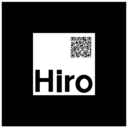 |
AR Code | A type of marker used for placing content insideaugmented realityapplications. Some AR Codes can contain QR codes inside, so that AR content can be linked to.[46]See alsoARTag. |
 |
Aztec Code | Designed by Andrew Longacre at Welch Allyn (now Honeywell Scanning and Mobility). Public domain. – International Standard: ISO/IEC 24778 |

|
bCode | A matrix designed for the study of insect behavior.[47]Encodes an 11 bit identifier and 16 bits of read error detection and error correction information. Predominantly used for markinghoney bees,but can also be applied to other animals. |
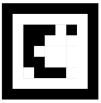
|
BEEtag | A 25 bit (5x5) code matrix of black and white pixels that is unique to each tag surrounded by a white pixel border and a black pixel border. The 25-bit matrix consists of a 15-bit identity code, and a 10-bit error check.[48]It is designed to be a low-cost, image-based tracking system for the study of animal behavior and locomotion. |

|
BeeTagg | A 2D code with honeycomb structures suitable for mobile tagging and was developed by the Swiss company connvision AG. |
| Bokode | A type ofdata tagwhich holds much more information than a barcode over the same area. They were developed by a team led byRamesh Raskarat theMIT Media Lab.The bokode pattern is a tiled series ofData Matrixcodes. | |

|
Boxing | A high-capacity 2D code is used onpiqlFilmby Piql AS[49] |
| Cauzin Softstrip | Softstrip code was used in the 1980s to encode software, which could be transferred by special scanners from printed journals into computer hardware. | |
| Code 1 | Public domain. Code 1 is currently used in the health care industry for medicine labels and the recycling industry to encode container content for sorting.[50] | |
 |
ColorCode | ColorZip[51]developed colour barcodes that can be read by camera phones from TV screens; mainly used in Korea.[52] |
 |
Color Construct Code | Color Construct Codeis one of the few code symbologies designed to take advantage of multiple colors.[53][54] |
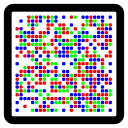 |
Cronto Visual Cryptogram | The Cronto Visual Cryptogram (also called photoTAN) is a specialized color barcode, spun out from research at theUniversity of Cambridgeby Igor Drokov,Steven Murdoch,and Elena Punskaya.[55]It is used for transaction signing in e-banking; the barcode contains encrypted transaction data which is then used as achallengeto compute atransaction authentication numberusing asecurity token.[56] |
| CyberCode | From Sony. | |
| d-touch | readable when printed on deformable gloves and stretched and distorted[57][58] | |
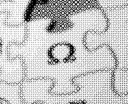 |
DataGlyphs | From Palo Alto Research Center (also termed Xerox PARC).[59]
Patented.[60] DataGlyphs can be embedded into a half-tone image or background shading pattern in a way that is almost perceptually invisible, similar tosteganography.[61][62] |
 |
Data Matrix | FromMicroscan Systems,formerly RVSI Acuity CiMatrix/Siemens. Public domain. Increasingly used throughout the United States. Single segment Data Matrix is also termedSemacode.– International Standard: ISO/IEC 16022. |
| Datastrip Code | From Datastrip, Inc. | |
| Digimarc code | The Digimarc Code is a unique identifier, or code, based on imperceptible patterns that can be applied to marketing materials, including packaging, displays, ads in magazines, circulars, radio and television[63] | |
| digital paper | patterned paper used in conjunction with adigital pento create handwritten digital documents. The printed dot pattern uniquely identifies the position coordinates on the paper. | |
| Dolby Digital | Digital sound code for printing on cinematic film between the threading holes | |
 |
DotCode | Standardized as ISS DotCode Symbology Specification 4.0. Public domain. Extended 2D replacement ofCode 128barcode. At this time is used to track individual cigarette and pharmaceutical packages. |
| Dot Code A | Also known asPhilips Dot Code.[64]Patented in 1988.[65] | |
| DWCode | Introduced by GS1 US and GS1 Germany, the DWCode is a unique, imperceptible data carrier that is repeated across the entire graphics design of a package[66] | |
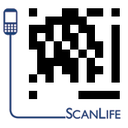 |
EZcode | Designed for decoding by cameraphones;[67]from ScanLife.[68] |
 |
Han Xin code | Code designed to encodeChinese characters,invented in 2007 by Chinese company The Article Numbering Center of China, introduced byAssociation for Automatic Identification and Mobilityin 2011 and published as ISO/IEC 20830:2021 in 2021. |
 |
High Capacity Color Barcode | HCCBwas developed byMicrosoft;licensed byISAN-IA. |
| HueCode | From Robot Design Associates. Uses greyscale or colour.[69] | |
| InterCode | FromIconlab, Inc.The standard 2D Code in South Korea. All 3 South Korean mobile carriers put the scanner program of this code into their handsets to access mobile internet, as a default embedded program. | |
| JAB Code | JustAnotherBar Code is a colored 2D Code. Square or rectangle. License free | |
 |
MaxiCode | Used byUnited Parcel Service.Now public domain. |
| mCode | Designed by NextCode Corporation, specifically to work with mobile phones and mobile services.[70]It is implementing an independent error detection technique preventing false decoding, it uses a variable-size error correction polynomial, which depends on the exact size of the code.[71] | |
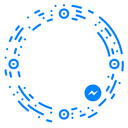 |
Messenger Codes | Proprietary ring-shaped code forFacebook Messenger.Defunct as of 2019, replaced by standard QR codes. |
 |
Micro QR code | Micro QR code is a smaller version of the QR code standard for applications where symbol size is limited. |
 |
Micro PDF417 | MicroPDF417 is a restricted size barcode, similar toPDF417,which is used to add additional data to linear barcodes. |
| MMCC | Designed to disseminate high capacity mobile phone content via existing colour print and electronic media, without the need for network connectivity | |
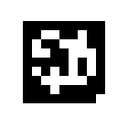 |
NexCode | NexCode is developed and patented by S5 Systems. |
| Nintendo Dot code | Developed byOlympus Corporationto store songs, images, and mini-games forGame Boy AdvanceonPokémon trading cards. | |
 |
PDF417 | Originated bySymbol Technologies.Public domain. – International standard:ISO/IEC15438 |
| Ocode | A proprietary matrix code in hexagonal shape.[72] | |
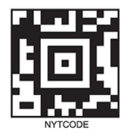 |
Qode | American proprietary and patented 2D Code from NeoMedia Technologies, Inc.[68] |
 |
QR code | Initially developed, patented and owned byDenso Wavefor automotive components management; they have chosen not to exercise theirpatent rights.Can encodeLatinand Japanese Kanji and Kana characters, music, images, URLs, emails. De facto standard for Japanese cell phones. Used withBlackBerry Messengerto pick up contacts rather than using a PIN code. The most frequently used type of code to scan with smartphones, and one of the most widely used 2D Codes.[73]Public Domain. – International Standard: ISO/IEC 18004 |
 |
Rectangular Micro QR Code (rMQR Code) | Rectangular extension ofQR CodeOriginated byDenso Wave.Public domain. – International standard:ISO/IEC23941 |
| Screencode | Developed and patented[74][75]byHewlett-PackardLabs. A time-varying 2D pattern using to encode data via brightness fluctuations in an image, for the purpose of high bandwidth data transfer from computer displays to smartphones via smartphone camera input. InventorsTimothy KindbergandJohn Collomosse,publicly disclosed at ACM HotMobile 2008.[76] | |
 |
ShotCode | Circular pattern codes forcamera phones.Originally from High Energy Magic Ltd in name Spotcode. Before that most likely termed TRIPCode. |
 |
Snapcode, also called Boo-R code | Used bySnapchat,Spectacles,etc. US9111164B1[77][78][79] |
| Snowflake Code | A proprietary code developed by Electronic Automation Ltd. in 1981. It is possible to encode more than 100 numeric digits in a space of only 5mm x 5mm. User selectable error correction allows up to 40% of the code to be destroyed and still remain readable. The code is used in the pharmaceutical industry and has an advantage that it can be applied to products and materials in a wide variety of ways, including printed labels, ink-jet printing, laser-etching, indenting or hole punching.[41][80][81] | |
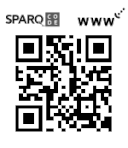 |
SPARQCode | QR code encoding standard from MSKYNET, Inc. |
| TLC39 | This is a combination of the two barcodesCode 39andMicroPDF417,forming a 2D pattern. It is also known as Telecommunications Industry Forum (TCIF) Code 39 or TCIF Linked Code 39.[82] | |
| Trillcode | Designed for mobile phone scanning.[83]Developed by Lark Computer, a Romanian company.[71] | |
| VOICEYE | Developed and patented by VOICEYE, Inc. in South Korea, it aims to allow blind and visually impaired people to access printed information. It also claims to be the 2D Code that has the world's largest storage capacity. | |
| WeChat Mini Programcode | A circular code with outward-projecting lines.[84] |
Example images
[edit]- First, second and third generation barcodes
-
GTIN-12 number encoded in UPC-A barcode symbol. First and last digit are always placed outside the symbol to indicate Quiet Zones that are necessary for barcode scanners to work properly
-
EAN-13 (GTIN-13) number encoded in EAN-13 barcode symbol. First digit is always placed outside the symbol, additionally right quiet zone indicator (>) is used to indicate Quiet Zones that are necessary for barcode scanners to work properly
-
"Wikipedia" encoded inCode 93
-
"*WIKI39*" encoded inCode 39
-
'Wikipedia "encoded inCode 128
-
An example of astacked barcode.Specifically a "Codablock" barcode.
-
PDF417sample
-
"This is an example Aztec symbol for Wikipedia" encoded inAztec Code
-
Text 'EZcode'
-
High Capacity Color Barcode of the URL for Wikipedia's article onHigh Capacity Color Barcode
-
"Wikipedia, The Free Encyclopedia" in several languages encoded inDataGlyphs
-
Two different 2D barcodes used in film:Dolby Digitalbetween the sprocket holes with the "Double-D" logo in the middle, andSony Dynamic Digital Soundin the blue area to the left of the sprocket holes
-
MaxiCodeexample. This encodes the string "Wikipedia, The Free Encyclopedia"
-
ShotCodesample
-
detail ofTwibright Optarscan from laser printed paper, carrying 32 kbit/s Ogg Vorbis digital music (48 seconds per A4 page)
-
AKarTrakrailroadAutomatic Equipment Identificationlabel on a caboose in Florida
In popular culture
[edit]In architecture, a building inLingang New Cityby German architectsGerkan, Marg and Partnersincorporates a barcode design,[86]as does a shopping mall calledShtrikh-kod(Russian forbarcode) in Narodnaya ulitsa ( "People's Street" ) in theNevskiy districtofSt. Petersburg,Russia.[87]
In media, in 2011, theNational Film Board of CanadaandARTE Francelaunched a web documentary entitledBarcode.tv,which allows users to view films about everyday objects by scanning the product's barcode with theiriPhonecamera.[88][89]
Inprofessional wrestling,theWWEstableD-Generation Xincorporated a barcode into their entrance video, as well as on a T-shirt.[90][91]
In the TV seriesDark Angel,the protagonist and the othertransgenicsin the Manticore X-series have barcodes on the back of their necks.
In video games, the protagonist of theHitmanvideo game serieshas a barcode tattoo on the back of his head; QR codes can also be scanned in a side mission inWatch Dogs. The 2018 videogameJudgmentfeaturesQR Codesthat protagonist Takayuki Yagami can photograph with his phone camera. These are mostly to unlock parts for Yagami'sDrone.[92]
In the filmsBack to the Future Part IIandThe Handmaid's Tale,cars in the future are depicted with barcodelicence plates.
In theTerminatorfilms, Skynet burns barcodes onto the inside surface of the wrists of captive humans (in a similar location to theWW2 concentration camp tattoos) as a unique identifier.
In music,Dave Daviesofthe Kinksreleased a solo album in 1980,AFL1-3603,which featured a giant barcode on the front cover in place of the musician's head. The album's name was also the barcode number.
The April 1978 issue ofMad Magazinefeatured a giant barcode on the cover, with the blurb "[Mad] Hopes this issue jams up every computer in the country...for forcing us to deface our covers with this yecchy UPC symbol from now on!"
Interactive Textbooks were first published byHarcourt College Publishers to Expand Education Technology with Interactive Textbooks.[93]
Designed barcodes
[edit]Some brands integrate custom designs into barcodes (while keeping them readable) on their consumer products.
Hoaxes about barcodes
[edit]There was minor skepticism fromconspiracy theorists,who considered barcodes to be an intrusivesurveillancetechnology, and from some Christians, pioneered by a 1982 bookThe New Money System 666by Mary Stewart Relfe, who thought the codes hid the number666,representing the "Number of the Beast".[94]Old Believers,a separation of theRussian Orthodox Church,believe barcodes are the stamp of theAntichrist.[95]Television hostPhil Donahuedescribed barcodes as a "corporate plot against consumers".[96]
See also
[edit]References
[edit]- ^abUS patent 2612994
- ^"How Barcodes Work".Stuff You Should Know.4 June 2019. Archived fromthe originalon 5 June 2019.Retrieved5 June2019.
- ^abCranstone, Ian."A guide to ACI (Automatic Car Identification)/KarTrak".Canadian Freight Cars A resource page for the Canadian Freight Car Enthusiast.Archivedfrom the original on 27 August 2011.Retrieved26 May2013.
- ^Keyes, John (22 August 2003)."KarTrak".John Keyes Boston photoblogger. Images from Boston, New England, and beyond.John Keyes. Archived fromthe originalon 10 March 2014.Retrieved26 May2013.
- ^abRoberts, Sam (11 December 2019)."George Laurer, Who Developed the Bar Code, Is Dead at 94".The New York Times.Archivedfrom the original on 22 June 2020.Retrieved13 December2019.
- ^Brown, Derrick (Spring 2023)."The Birth of the Barcode".The Journal of theComputer Conservation Society(101).ISSN0958-7403.
- ^Brown, Derrick (20 March 2023)."The Birth of the Barcode".British Computer Society.Archivedfrom the original on 6 August 2024.Retrieved6 August2024.
- ^Fox, Margalit (15 June 2011)."Alan Haberman, Who Ushered in the Bar Code, Dies at 81".The New York Times.Archivedfrom the original on 24 June 2017.Retrieved24 February2017.
- ^G. F. (2 November 2017)."Why QR codes are on the rise".The Economist.Archivedfrom the original on 5 February 2018.Retrieved5 February2018.
- ^Fishman, Charles (1 August 2001)."The Killer App – Bar None".American Way.Archived fromthe originalon 12 January 2010.Retrieved19 April2010.
- ^abcdefSeideman, Tony (Spring 1993),"Barcodes Sweep the World",Wonders of Modern Technology,archived fromthe originalon 16 October 2016
- ^Dunn, Peter (20 October 2015)."David Collins, SM '59: Making his mark on the world with bar codes".technologyreview.com.MIT.Archivedfrom the original on 10 November 2018.Retrieved2 December2019.
- ^Graham-White, Sean (August 1999). "Do You Know Where Your Boxcar Is?".Trains.59(8): 48–53.
- ^Laurer, George."Development of the U.P.C. Symbol".Archived fromthe originalon 25 September 2008.
- ^Nelson, Benjamin (1997).Punched Cards To Bar Codes: A 200-year journey.Peterborough, N.H.: Helmers.ISBN9780911261127.
- ^abVarchaver, Nicholas (31 May 2004)."Scanning the Globe".Fortune.Archivedfrom the original on 14 November 2006.Retrieved27 November2006.
- ^Rawsthorn, Alice (23 February 2010)."Scan Artists".New York Times.Archivedfrom the original on 18 November 2016.Retrieved31 July2015.
- ^"World hails barcode on important birthday".ATN.1 July 2014.Archivedfrom the original on 23 July 2014.Retrieved15 February2017.
- ^"A Short History of Bar Code".BarCode 1.Adams Communications.Archivedfrom the original on 2 May 2010.Retrieved28 November2011.
- ^"Barcode".iWatch Systems.2 May 2011.Archivedfrom the original on 9 January 2012.Retrieved28 November2011.
- ^Oberfield, Craig."QNotes Barcode System".US Patented #5296688.Quick Notes Inc.Archivedfrom the original on 31 December 2012.Retrieved15 December2012.
- ^National Geographic, May 2010, page 30
- ^Hecht, David L. (March 2001)."Printed Embedded Data Graphical User Interfaces"(PDF).IEEE Computer.34(3). Xerox Palo Alto Research Center: 47–55.doi:10.1109/2.910893.Archived fromthe original(PDF)on 3 June 2013.
- ^Howell, Jon; Kotay, Keith (March 2000)."Landmarks for absolute localization"(PDF).Dartmouth Computer Science Technical Report TR2000-364.Archived fromthe originalon 1 October 2020.
- ^"IATA.org".IATA.org. 21 November 2011.Archivedfrom the original on 4 January 2012.Retrieved28 November2011.
- ^"Paperbyte Bar Codes for Waduzitdo".Byte magazine.September 1978. p. 172.Archivedfrom the original on 4 July 2017.Retrieved6 February2009.
- ^"Nokia N80 Support".Nokia Europe.Archived fromthe originalon 14 July 2011.
- ^"package overview for mbarcode".Maemo.org.Archivedfrom the original on 7 April 2019.Retrieved28 July2010.
- ^Sargent, Mikah (24 September 2017)."How to use QR codes in iOS 11".iMore.Archivedfrom the original on 2 October 2017.Retrieved1 October2017.
- ^"15+ Best Barcode Scanner iPhone Applications".iPhoneness.3 March 2017.Archivedfrom the original on 2 October 2017.Retrieved1 October2017.
- ^David, H (28 November 2018),"Barcodes – Validation vs Verification in GS1",Labeling News,archivedfrom the original on 7 June 2020,retrieved6 June2020
- ^"Layman's Guide to ANSI, CEN, and ISO Barcode Print Quality Documents"(PDF).Association for Automatic Identification and Data Capture Technologies (AIM). 2002. Archived fromthe original(PDF)on 10 September 2016.Retrieved23 November2017.
- ^Zieger, Anne (October 2003)."Retailer chargebacks: is there an upside? Retailer compliance initiatives can lead to efficiency".Frontline Solutions.Archived fromthe originalon 8 July 2012.
- ^abcdefghijklCorp, Express."Barcode Glossary | Express".Express Corp.Archivedfrom the original on 11 December 2019.Retrieved11 December2019.
- ^Bar Code Verification Best Practice work team (May 2010)."GS1 DataMatrix: An introduction and technical overview of the most advanced GS1 Application Identifiers compliant symbology"(PDF).Global Standards 1.1(17): 34–36.Archived(PDF)from the original on 20 July 2011.Retrieved2 August2011.
- ^GS1 Bar Code Verification Best Practice work team (May 2009)."GS1 Bar Code Verification for Linear Symbols"(PDF).Global Standards 1.4(3): 23–32.Archived(PDF)from the original on 27 September 2011.Retrieved2 August2011.
{{cite journal}}:CS1 maint: numeric names: authors list (link) - ^Garner, J (2019),Results of Data Matrix Barcode Testing for Field Applications,Oak Ridge National Laboratory,retrieved6 June2020
- ^"Technical committees – JTC 1/SC 31 – Automatic identification and data capture techniques".ISO. 4 December 2008.Archivedfrom the original on 18 October 2011.Retrieved28 November2011.
- ^Harmon, Craig K.; Adams, Russ (1989).Reading Between The Lines:An Introduction to Bar Code Technology.Peterborough, NH: Helmers. p. 13.ISBN0-911261-00-1.
- ^Australia Post: Barcoding fact sheet,Oct. 2014
- ^ab"2-Dimensional Bar Code Page".www.adams1.com.Archivedfrom the original on 7 July 2011.Retrieved12 January2019.
- ^"Code 16K Specs"(PDF).www.gomaro.ch.Archived(PDF)from the original on 13 July 2018.Retrieved12 January2019.
- ^Boone, Peter (13 November 2020)."How do Spotify Codes work?".boonepeter.github.io.Archivedfrom the original on 3 May 2023.Retrieved3 May2023.
- ^"Scan these new QR-style Spotify Codes to instantly play a song".TechCrunch.5 May 2017.Retrieved21 August2022.
- ^"Creating App Clip Codes".Apple Developer Documentation.
- ^""AR Code Generator"".Archivedfrom the original on 10 June 2018.Retrieved29 April2017.
- ^Gernat, Tim; Rao, Vikyath D.; Middendorf, Martin; Dankowicz, Harry; Goldenfeld, Nigel; Robinson, Gene E. (13 February 2018)."Automated monitoring of behavior reveals bursty interaction patterns and rapid spreading dynamics in honeybee social networks".Proceedings of the National Academy of Sciences.115(7): 1433–1438.Bibcode:2018PNAS..115.1433G.doi:10.1073/pnas.1713568115.ISSN0027-8424.PMC5816157.PMID29378954.
- ^Combes, Stacey A.; Mountcastle, Andrew M.; Gravish, Nick; Crall, James D. (2 September 2015)."BEEtag: A Low-Cost, Image-Based Tracking System for the Study of Animal Behavior and Locomotion".PLOS ONE.10(9): e0136487.Bibcode:2015PLoSO..1036487C.doi:10.1371/journal.pone.0136487.ISSN1932-6203.PMC4558030.PMID26332211.
- ^"GitHub - piql/Boxing: High capacity 2D barcode format".GitHub.4 November 2021.Archivedfrom the original on 21 December 2020.Retrieved26 March2021.
- ^Adams, Russ (15 June 2009)."2-Dimensional Bar Code Page".Archivedfrom the original on 7 July 2011.Retrieved6 June2011.
- ^"Colorzip.com".Colorzip.com.Archivedfrom the original on 16 December 2014.Retrieved28 November2011.
- ^"Barcodes for TV Commercials".Adverlab. 31 January 2006.Archivedfrom the original on 8 December 2009.Retrieved10 June2009.
- ^"About".Colour Code Technologies. Archived fromthe originalon 29 August 2012.Retrieved4 November2012.
- ^"Frequently Asked Questions".ColorCCode. Archived fromthe originalon 21 February 2013.Retrieved4 November2012.
- ^"New system to combat online banking fraud".University of Cambridge.18 April 2013.Archivedfrom the original on 26 July 2020.Retrieved21 January2020.
- ^Cronto Visual Transaction Signing,OneSpan,archivedfrom the original on 6 December 2019,retrieved6 December2019
- ^d-touch topological fiducial recognition,MIT, archived fromthe originalon 2 March 2008.
- ^d-touch markers are applied to deformable gloves,MIT, archived fromthe originalon 21 June 2008.
- ^SeeXerox.comArchived7 June 2009 at theWayback Machinefor details.
- ^"DataGlyphs: Embedding Digital Data".Microglyphs. 3 May 2006.Archivedfrom the original on 26 February 2014.Retrieved10 March2014.
- ^""DataGlyph" Embedded Digital Data ".Tauzero.Archivedfrom the original on 22 November 2013.Retrieved10 March2014.
- ^"DataGlyphs".Xerox.Archivedfrom the original on 23 November 2012.Retrieved10 March2014.
- ^"Better Barcodes, Better Business"(PDF).Archived fromthe original(PDF)on 22 November 2016.Retrieved19 June2017.
- ^Dot Code AArchived9 May 2017 at theWayback Machineat barcode.ro
- ^"Dot Code A Patent"(PDF).Archived(PDF)from the original on 10 March 2016.Retrieved1 September2017.
- ^"GS1 Germany and Digimarc Announce Collaboration to Bring DWCode to the German Market"(Press release).
- ^"Scanbuy".Archivedfrom the original on 20 August 2008.Retrieved28 November2011.
- ^abSteeman, Jeroen."Online QR Code Decoder".Archived fromthe originalon 9 January 2014.Retrieved9 January2014.
- ^"BarCode-1 2-Dimensional Bar Code Page".Adams. Archived fromthe originalon 3 November 2008.Retrieved10 June2009.
- ^"Global Research Solutions – 2D Barcodes".grs.weebly.com.Archivedfrom the original on 13 January 2019.Retrieved12 January2019.
- ^abKato, Hiroko; Tan, Keng T.; Chai, Douglas (8 April 2010).Barcodes for Mobile Devices.Cambridge University Press.ISBN9781139487511.
- ^"Ocode - Authentifiez vos produits par le marquage d'un code unique".www.ocode.fr(in French).Retrieved27 November2023.
- ^Chen, Rongjun; Yu, Yongxing; Xu, Xiansheng; Wang, Leijun; Zhao, Huimin; Tan, Hong-Zhou (11 December 2019)."Adaptive Binarization of QR Code Images for Fast Automatic Sorting in Warehouse Systems".Sensors.19(24): 5466.Bibcode:2019Senso..19.5466C.doi:10.3390/s19245466.PMC6960674.PMID31835866.
- ^""US Patent 9270846: Content encoded luminosity modulation"".Archivedfrom the original on 2 December 2018.Retrieved1 December2018.
- ^""US Patent 8180163: Encoder and decoder and methods of encoding and decoding sequence information with inserted monitor flags"".Archivedfrom the original on 2 December 2018.Retrieved1 December2018.
- ^""Screen Codes: Visual Hyperlinks for Displays""(PDF).Archived(PDF)from the original on 11 December 2019.Retrieved1 December2018.
- ^""Snapchat is changing the way you watch snaps and add friends"".July 2015.Archivedfrom the original on 27 January 2021.Retrieved30 August2017.
- ^""Snapchat Lets You Add People Via QR Snaptags Thanks To Secret Scan.me Acquisition"".28 January 2015.Archivedfrom the original on 24 February 2017.Retrieved24 February2017.
- ^""How Snapchat Made QR Codes Cool Again"".4 May 2015.Archivedfrom the original on 14 September 2016.Retrieved24 February2017.
- ^US 5825015,Chan, John Paul & GB, "Machine readable binary codes", issued 20 October 1998
- ^"US Patent 5825015".pdfpiw.uspto.gov.20 October 1998.Archivedfrom the original on 13 January 2019.Retrieved12 January2019.
- ^"Understanding TLC-39 Barcodes: All You Need to Know".9 August 2023.Retrieved27 November2023.
- ^"Trillcode Barcode".Barcoding, Inc.17 February 2009. Archived fromthe originalon 26 July 2020.Retrieved12 January2019.
- ^"Getting Mini Program Code".Weixin public doc.
- ^( chu )デンソーウェーブArchived7 June 2012 at theWayback Machine,denso-wave.com(in Japanese)Copyright
- ^"Barcode Halls, Standard Facades for Manufacturing Buildings - Projects - gmp Architekten".www.gmp.de.2009.Archivedfrom the original on 16 December 2023.Retrieved16 December2023.
- ^"image".Peterburg2.ru.Archivedfrom the original on 10 November 2011.Retrieved28 November2011.
- ^Lavigne, Anne-Marie (5 October 2011)."Introducing Barcode.tv, a new interactive doc about the objects that surround us".NFB Blog.National Film Board of Canada.Archivedfrom the original on 11 October 2011.Retrieved7 October2011.
- ^Anderson, Kelly (6 October 2011)."NFB, ARTE France launch 'Bar Code'".Reelscreen.Archivedfrom the original on 10 October 2011.Retrieved7 October2011.
- ^[1]Archived16 March 2015 at theWayback Machine
- ^"Dx theme song 2009–2010".YouTube. 19 December 2009.Archivedfrom the original on 11 December 2021.Retrieved10 March2014.
- ^Diego Agruello (27 June 2019)."Judgment QR code locations to upgrade Drone Parts explained • Eurogamer.net".Eurogamer.Archivedfrom the original on 28 August 2019.Retrieved3 August2019.
- ^"CueCat History".CueCat History.Archivedfrom the original on 12 November 2019.Retrieved12 November2019.
- ^"What about barcodes and 666: The Mark of the Beast?".Av1611.org. 1999.Archivedfrom the original on 27 November 2013.Retrieved14 March2014.
- ^Serafino, Jay (26 July 2018)."The Russian Family That Cut Itself Off From Civilization for More Than 40 Years".Mental Floss.Archivedfrom the original on 7 May 2020.Retrieved6 May2020.
- ^Bishop, Tricia (5 July 2004)."UPC bar code has been in use 30 years".SFgate.com. Archived fromthe originalon 23 August 2004.Retrieved22 December2009.
Further reading
[edit]- Automating Management Information Systems: Barcode Engineering and Implementation– Harry E. Burke, Thomson Learning,ISBN0-442-20712-3
- Automating Management Information Systems: Principles of Barcode Applications– Harry E. Burke, Thomson Learning,ISBN0-442-20667-4
- The Bar Code Book– Roger C. Palmer, Helmers Publishing,ISBN0-911261-09-5,386 pages
- The Bar Code Manual– Eugene F. Brighan, Thompson Learning,ISBN0-03-016173-8
- Handbook of Bar Coding Systems– Harry E. Burke, Van Nostrand Reinhold Company,ISBN978-0-442-21430-2,219 pages
- Information Technology for Retail:Automatic Identification & Data Capture Systems– Girdhar Joshi,Oxford University Press,ISBN0-19-569796-0,416 pages
- Lines of Communication– Craig K. Harmon, Helmers Publishing,ISBN0-911261-07-9,425 pages
- Punched Cards to Bar Codes– Benjamin Nelson, Helmers Publishing,ISBN0-911261-12-5,434 pages
- Revolution at the Checkout Counter: The Explosion of the Bar Code– Stephen A. Brown,Harvard University Press,ISBN0-674-76720-9
- Reading Between The Lines– Craig K. Harmon and Russ Adams, Helmers Publishing,ISBN0-911261-00-1,297 pages
- The Black and White Solution: Bar Code and the IBM PC– Russ Adams and Joyce Lane, Helmers Publishing,ISBN0-911261-01-X,169 pages
- Sourcebook of Automatic Identification and Data Collection– Russ Adams, Van Nostrand Reinhold,ISBN0-442-31850-2,298 pages
- Inside Out: The Wonders of Modern Technology– Carol J. Amato, Smithmark Pub,ISBN0831746572,1993










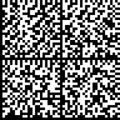





![The QR Code for the Wikipedia URL. "Quick Response", the most popular 2D barcode. It is open in that the specification is disclosed and the patent is not exercised.[85]](https://upload.wikimedia.org/wikipedia/commons/thumb/1/1d/WikiQRCode.svg/120px-WikiQRCode.svg.png)








